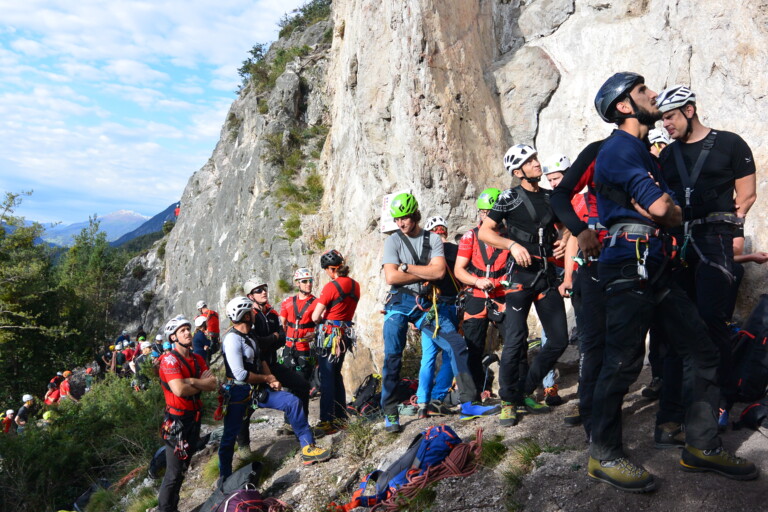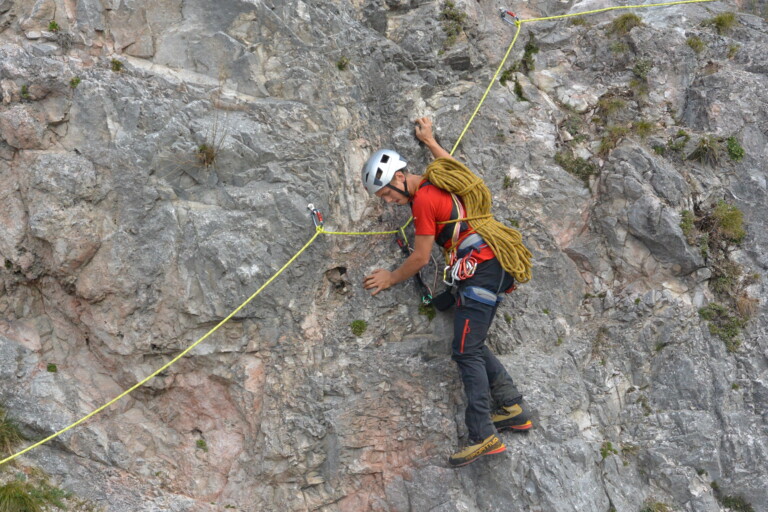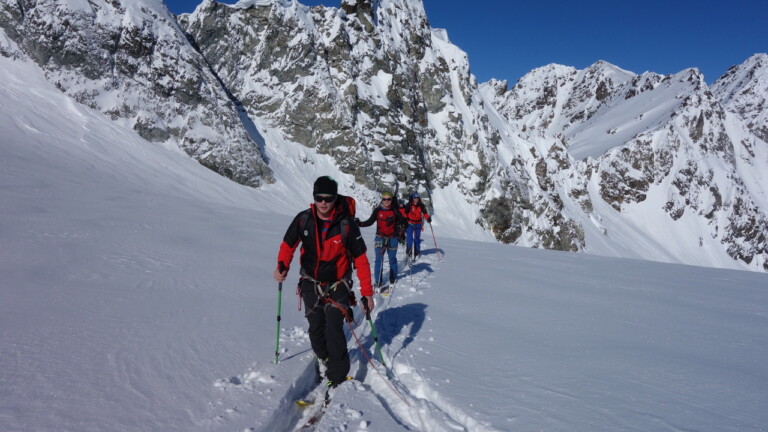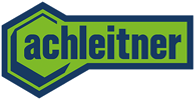How to become a mountain rescuer
The demands on a prospective mountain rescuer are high. A newcomer to the mountains will hardly be able to complete the training quickly. Getting started requires that you already have alpinist skills and mountain experience.
If you have this, with a little ambition you can become a fully trained mountain rescuer in 2 years. After a probationary year in a local office, the candidate examination is split into summer and winter parts. If you pass this successfully, you must attend a one-week winter course and a summer course.
Once you have completed both courses, you are a mountain rescuer.
THE REQUIREMENTS
Anyone who wants to join the mountain rescue service should be a reasonably experienced alpinist. Safe movement in impassable terrain, alpine climbing experience with difficulty levels from 4 upwards, knowledge of ice climbing, high alpine combined summit tours, ski touring experience and good backcountry skiing skills, as well as good fitness are the basic requirements.
Proof of fulfillment of these requirements must be provided when taking the candidate examination in the form of a tour report. As well as confirmation of a 16-hour first aid course.
However, every aspirant must also be aware of the fact that mountain rescue can also be psychologically stressful. Hours of work in all weathers, cold, wet, dark, exhausting, and often in dangerous terrain where no mistakes can happen. And then the images of crashed, mangled bodies that stay with many people for the rest of their lives. This is also mountain rescue.
On the other hand, there is the joy that flows through you when YOUR participation as a mountain rescuer helped someone in need. And of course the camaraderie within the mountain rescue team, which is second to none.
AND TRIAL YEAR

The local committee decides whether to be included in the mountain rescue service. Anyone who wants to join mountain rescue must contact the local office closest to their place of residence.
Once accepted, the probationary year begins During this probationary year, the candidate has to prove that he/she is up to the task ahead and has to acquire the necessary skills during this time.
Conversely, the local office must ensure that this knowledge is imparted to the candidate so that nothing stands in the way of a positive candidate examination.
VERIFICATION

SUMMER PART
The summer part of the candidate examination takes place at the beginning of October and has movement in the rock as its central theme.
A mountain rescue member must be able to move safely in any terrain, otherwise he or she becomes a burden for the emergency team.
- Movement in rough terrain, although there may also be easy climbing areas
- Climbing in the lead at the 4th level of difficulty with mountain boots
- basic rope and recovery techniques
- First aid
WINTER PART
During the candidate test in winter (mid-January), the candidates’ physical fitness and skiing skills are checked.
- Ascent approx. 1,000m in a maximum of 2 hours (500m/hour)
- safe skiing in any snow condition


THE REVIEW
Each participant is independently assessed at each station or for each requirement by one, or sometimes several, trainers using a point system with plus and minus points.
At the end of the review, the points of all instructors per participant are summed up. If the plus portion predominates, the candidate has passed the test.
If the goals are not achieved, there is a second chance the following year.
WHAT'S NEXT
Anyone who has passed both parts of the candidate examination is entitled to attend the basic courses. These are also divided into a winter and a summer part. They must be completed in this order because the content builds on one another. The more detailed description can be found under “Basic training”.
The courses last one week each and take place in the Jamtal training center. The number of participants is limited, but there are always several courses per season so that everyone usually gets a place.

INFORMATION
Regarding admission, you should contact the nearest local office.
The office staff are also happy to help. The contact details can be found below.





